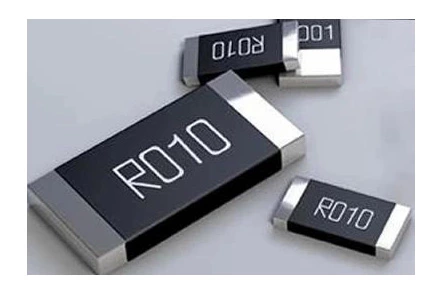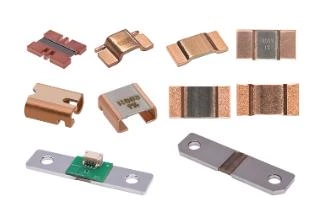How to Choose the Right Resistor for Your Circuit Design
When choosing the appropriate resistor for a circuit, several key factors need to be considered: resistance value, rated power, tolerance and temperature coefficient. You also need to consider the specific application, including environmental conditions and installation requirements.
1.Calculate the Resistance:
Use Ohm's Law (V=IR) to determine the required resistance value based on the voltage and current in your circuit.
For example, if you have a 5V source and need a current of 10mA through an LED, the resistor value would be calculated as follows:
- R = (5V - 2V) / 0.01A = 300 ohms. (Assuming the LED has a forward voltage drop of 2V).

2.Determine the Power Rating:
The power rating indicates how much heat a resistor can dissipate without being damaged.
Calculate the power dissipated by the resistor using P = I²R or P = V²/R.
Select a resistor with a power rating significantly higher than the calculated power dissipation to ensure safe operation and prevent overheating.
For instance, in the LED example above, the power dissipated by the resistor would be: P = (0.01A)² * 300Ω = 0.03W. A 1/4W (0.25W) resistor would be suitable.
3. Consider Tolerance:
Tolerance indicates the acceptable variation in the resistor's actual resistance value from its stated value.
For precision applications, a lower tolerance (e.g., 1%) is preferable, but it will likely be more expensive.
For general-purpose circuits, a 5% or 10% tolerance is often sufficient.
4. Choose the Right Resistor Type:
Carbon composition resistors: Suitable for general-purpose applications and are relatively inexpensive.
Metal film resistors: Offer better stability and accuracy than carbon composition resistors.
Wire-wound resistors: Designed for high-power applications and can handle large amounts of current.

It is often used in conjunction with an operational amplifier or ADC to measure the magnitude of the current flowing through a circuit.
-
Typical scenarios: battery management system, motor drive, power monitoring
-
Calculate the current by detecting the voltage drop across the resistor (I = V/R)
5.Calculate the required resistance value (unit: ohm)
5.1Using Ohm's Law:
V = IR → R = V/I
5.2Example:
-
To limit the LED current (working voltage is 2 v), the power supply for 5 v, target current to 20 ma:
-
The voltage across the resistor = 5V - 2V = 3V
-
R = 3V / 0.02A = 150 Ω
6.Determine the power rating
6.1The power calculation formula is as follows:
P = V × I = I² × R = V² / R
It is recommended to choose a power rating that is twice or more of the actual power consumption to enhance reliability.
6.2Example:
-
150 Ω resistance, current 20 mA:
-
P = 0.02² × 150 = 0.06 W
-
Resistors of 0.125W or 0.25W should be selected
7.Select the appropriate tolerance (accuracy)
| Tolerance | Precision Description | Common Applications |
|---|---|---|
| ±5% | General precision | Consumer electronics |
| ±1% | Medium precision | General-purpose circuits, instrumentation |
| ±0.1% ~ ±0.5% | High precision | Analog circuits, measuring instruments |
8.Select the packaging form
According to the installation and the current size to choose encapsulation: SMD (SMD) resistor:
suitable for automatic production, commonly used packaging, such as 0603, 0805, 1206
plug-in (DIP) resistance: for manual welding and prototype test power
metal casing resistance: used in the occasion of big electric current or high calorific value
9.Consider the environment and special parameters
Operating temperature range: such as - 55 ° C to + 125 ° C
temperature coefficient (TCR) : requires high stability when choosing low TCR resistance (e.g., plus or minus 50 PPM / ° C)
whether to non-inductive resistance: high frequency or pulse application should avoid to use winding resistance
Frequently asked questions
FAQ Q1: choose resistance will bigger more secure?
A: In current-limiting situations, if the resistor is selected too large, the current may be insufficient, affecting the functionality. Choosing too small may burn out the components. It should be selected based on the calculated value, with a slight margin.
Q2: how high power resistance does not burn?
A: First, calculate using P = I²R, and then select a model with a power rating of twice or more.
Q3: how do the LED current limiting resistor to choose?
A: It can be calculated by subtracting the LED voltage from the supply voltage and then dividing by the target current. A conventional 1/4W with an accuracy of ±5% is sufficient.